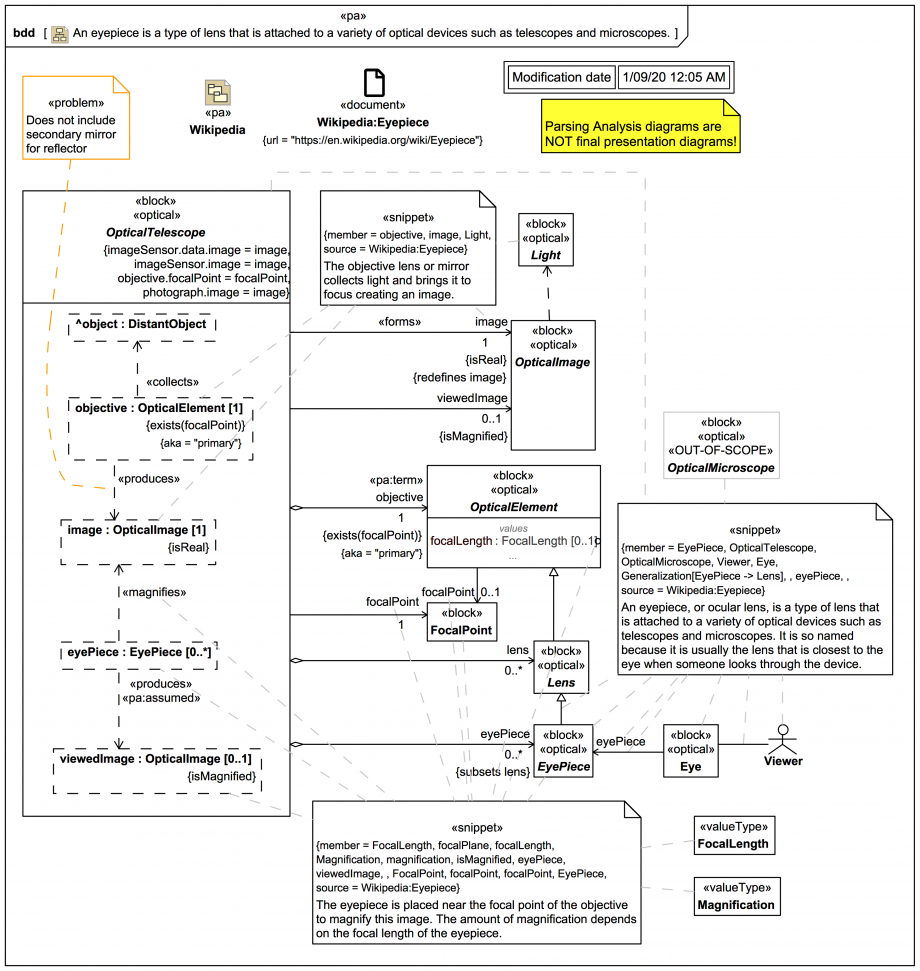Tags and keywords
It is assumed that any OpticalElement - of which Lens and EyePiece are special cases - may (but need not) have a focalLength:FocalLength[0..1], where the ValueType FocalLength offers the opportunity to document how it is defined.
Representing the concept 'focal point' is tricky. A block FocalPoint has been used, rather than a composite ValueType, so that any geometrical properties can be represented as value properties with Units. It has been assumed that any OpticalElement may have a focalPoint:FocalPoint[0..1], however the specific objective:OpticalElement has a constraint asserting that it does - exists(focalPoint) - and further if it does, it must be the same as that the single focalPoint:FocalPoint[1] of the OpticalTelescope.
Those readers who know anything about optics may be unsettled about the use of a single focal point, as in fact for any given distant object (and depending on its relationship to the telescope's axis), and for any given telescope configuration, there is a subtle region around a "focal point" that will have some relationship to a focal plane (not yet covered). Ignore diffraction limiting and chromatic aberration, the basic idea is conveyed by the concept circle of confusion:

For now, we are just going to assert that for every telescope mode and distant object one can define some single focal point in space.
The OpticalTelescope has an optional eyepiece:Eyepiece[0..1] which {subsets} lens:Lens[0..*]. There is an ItemFlow with a conveyed Classifier Light on an Association between Eyepiece and Eye, which in turn has an Association with an Actor Viewer.
The internal structure compartment of block OpticalTelescope has once again been used to indicate the semantic triples for «collects» (means also 'gathers') and «produces», and now also that the eyepiece «magnifies» the image. It has been assumed that the Eyepiece «produces» the viewedImage identified earlier.
Again, there is a minor «problem» indicated, the snippets so far seem to not explicitly include the possibility of a secondary mirror in the image forming process, which concern will be addressed in due course.


